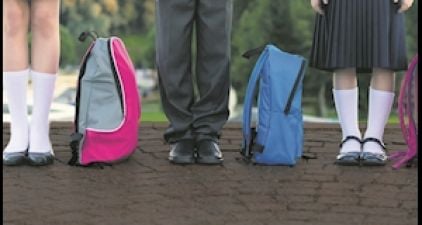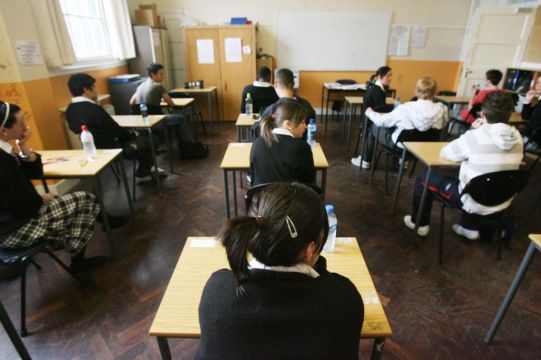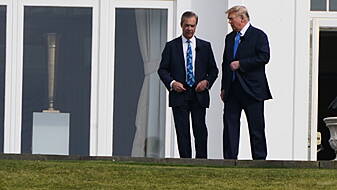As the end of August looms, almost one million primary and secondary school children around the country will be preparing to go back to school, once again with the consideration of Covid-19 measures.
In July, the Minister of Education Norma Foley confirmed all schools would reopen fully at the end of the summer.
Here's what parents, students and staff can expect when they get back to school in the coming weeks.
What measures will be in place to protect against Covid-19?
The basics regarding Covid-19 remain the same — schools will again be encouraging regular hand-washing, maintaining physical distance, practising good respiratory hygiene and cough etiquette, and enhanced cleaning measures.
Once again, with the aim of reducing the introduction of the virus into schools, people in the school community are asked to stay at home if they are unwell or if any members of their household are unwell with symptoms consistent with Covid-19.
Less interaction between classes and class groups, staggered breaks and lunch times and the use of spaces such as PE halls as classrooms will all be seen as schools adhere to guidelines.
Will students have to wear face masks?
For primary school pupils, no. The Department states that “it is not practical for many students to wear a mask properly for the duration of a school day.”
Cloth face coverings are not considered suitable for children under the age of 13, and while older students should not be requested to wear a facial covering, those who may wish to wear one where physical distancing is difficult “should not be discouraged”.
In post-primary schools, it is a requirement that teachers, staff and students wear a face mask when a physical distance of two metres from other staff or students cannot be maintained.
Are there any changes to the measures in light of the Delta variant?
Public health advice has stated that new variants of the disease do not change the infection prevention and control measures required in schools, the Minister for Education has said.
However, the Department has updated its guidance for schools on ventilation and is distributing a number of portable CO2 monitors – between 2 and 20 at primary level and between 20 and 35 at post-primary level depending on school size – to provide a general indication of ventilation.
Under ventilation guidance, schools should have windows open as fully as possible when classrooms are not in use (such as during break-times or lunchtimes) and partially open when classrooms are in use.
“The provision of CO2 monitors for every school will be an important tool in keeping our schools safe and in addition to the mitigation measures already in place, our staff and students can be confident of returning to safe environments in our schools,” Minister Norma Foley said.
How will staff prepare to go back to work?
Guidelines published by the Departments of Health and Business regarding the return to work lay out measures which should be adopted before staff return to the workplace, which includes schools.
These include mandatory Covid-19 induction training, the appointment of at least one staff member to ensure measures are adhered to in the workplace, and the establishment of a system of how to deal with suspected cases of the virus.
What happens if a suspected or confirmed case is identified in a school?
If a case is suspected, the person must be brought to a designated isolation area and in the case of a student, their parent or guardian must be contacted. After arrangements are made to have the person brought home to self-isolate, the isolation and work areas should be cleaned appropriately.
Schools are instructed to maintain both staff and pupil confidentiality at all times and to follow the instructions of HSE Public Health.
If a person tests positive for the virus, the HSE via contact tracers will inform any staff or parents of students deemed to be close contacts of the case, and advise of appropriate action "on a case-by-case basis that should be take vis-a-vis the operation of the school".
What about staff and students considered ‘very high risk’ for Covid-19?
The Department says schools will be provided with resources to replace staff who have been assessed as unable to return to the workplace due to Covid-19, and these staff will be facilitated to work from home.
Students deemed at “very high risk” and who cannot return to school for health reasons will receive “appropriate support to engage adequately with learning” from their school.
Additional supports will be provided for these pupils through designated teachers from within the staffing resources of the school, the Department said.
Has there been any reaction to the measures?
Some believe that the measures set to be in place are inadequate to protect school communities from the spread of Covid-19, amid high rates of community transmission of the Delta variant.
The Independent Scientific Advisory Group (ISAG) has said that the mass infection of unvaccinated school-going children with Covid-19 will occur if urgent action is not taken.

The group is calling for a number of additional protective measures to be established in schools.
Among the measures is a requirement for teachers and students, including young primary school children, to wear high-quality face masks, the monitoring of air-quality levels using ventilation and HEPA filtration, and the installation of CO2 monitors in each classroom.
In order to facilitate social distancing, more space should be made available to schools, ISAG said, and regular saliva-based PCR testing should be considered.
This article was amended on 22/08/21 at 10.02am.







